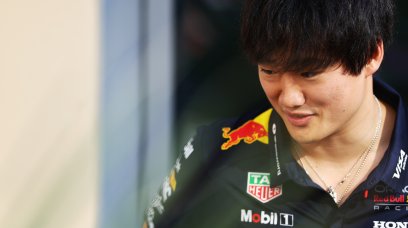We have repeated it several times, the Ferrari of 2023 will not be a revolution, at least on a visual level, compared to the F1-75. This does not mean, however, that the aerodynamic concept will replicate its predecessor, quite the opposite. Bearing in mind that the major innovations capable of increasing the competitiveness of the car will be on the floor, not least caused by the regulatory changes, the next single-seater from Maranello will also show distinctive elements in the visible parts. The shape of the sidepods will maintain the same 'carved' profile on the upper part, with large grilles for heat dissipation, and it will see a profound narrowing towards the rear. In fact, the area commonly described as the 'coke bottle' in front of the rear wheels will be slightly further forward, compared to the F1-75, in favour of a less complex air flow management directed towards the rear. In practice, if we consider the bodywork which on the F1-75 extended behind the engine cover, narrowing into a semi-circular section (of variable diameter depending on the layout / ambient temperatures), should be replaced by horizontal vents which it will extend all the way over the rear suspension members. This is a configuration partly borrowed from the Red Bull RB18 which, being equipped with sloping sides, was forced to dissipate heat through the rear vent and grilles of varying width, on the sides of the cockpit and at the base of the engine cover (the latter feature present from the version introduced at Silverstone). The image below show Red Bull's own evolution of the engine cover on the RB18. The horizontal vent that Ferrari will take inspiration from has the 'HRC Honda Racing' sticker attached to it.
In essence, the car body of the 675 (as per the internal design code), will be characterised by different volumes compared to the F1-75, in favour of a lower drag. One change, which according to our information should further characterise the new single-seater, concerns the lower profile of the sides. The step between their vertical section and the floor side should appear much more marked. Basically, a sort of channel would be created, which follows the "double floor" principle, masterfully interpreted on the World Champion RB18. In a certain sense, it would be a natural evolution of the previous project, which would not completely disrupt the internal packaging of the cooling system, but would coincide with a different placement of the deformable structures on the sides of the cockpit (anti-intrusion cones). The chassis, in fact, in its lower section on the sides of the cockpit, and in the fuel tank area, will be profoundly different from its predecessor, maintaining, according to rumours, a precise correspondence only in the pick up points of the engine. The work in evolving the location of internal mechanics then involved the total makeover of the gearbox, to allow the adoption of the diffuser characterised by a 10mm elevation of its junction with respect to the Venturi channels. The suspensions have remained unchanged, but the rear one, precisely to allow for a different floor design in this area, would have a different location of the elements inside the gearbox.
As far as the power unit is concerned, the evolution of the 066/7, which had reliability problems related to the turbocharger and MGU-H, hinged on research into the improved efficiency of the TJI (Turbulent Jet Injection) injection system, to obtain maximum filling of the combustion chambers and effective propagation of the flame front inside. The data that emerged during the long hours on the test bench for the new spec power unit (permitted for the purpose of increasing reliability) was decidedly promising. While wanting to maintain a low profile, there is talk of an increase in power of around 30bhp compared to the previous version. This data has increased optimism towards the new single-seater in the technical teams of Gestione Sportiva. In fact, the performance analysis, albeit only simulated for now, compared to the data collected on the track with the experimental F1-75 in the last few races, has occupied aerodynamicists and engine engineers, directed respectively by Sanchez and Gualtieri, for over 12 weeks. The changes at the top, for now, have only touched the two technical "islands", too busy in the latest design rush and now in the production of the pieces, to pay too much attention to them. After all, needless to reiterate it, Frederic Vasseur's task from next January 9, in order not to be unrealistic, will rest on how confident the team are of the new car's competitiveness. The buzzes and noises - not the ones made on the assembly line - are likely to remain outside the department.
The “675” compared to the F1-75. It will differ in the profile of the sides. In particular, the rear 'Coke bottle' section will be further forward, with a pronounced narrowing of the sidepods towards the rear. At the same time, the lower profile of the sides should also incorporate a sort of channel which would exploit the principle of the double floor in a more accentuated way, clearly inspired by Red Bull, but also a logical evolution of the previous project.
In the comparison from above, it is evident how the engine cover of the 675 would be characterised in the rear section by a horizontal volume, increasing the section of the rear vent. This choice is consequent to the reduction of the rear volume of the sides and of the slits arranged in the upper concave profile. The increase in the horizontal rear vent will make it possible to keep the heat exchange unchanged despite the smaller volume of the sides.
Most read








